Earlier this month I was able, thanks to the organizing efforts of a colleague, to participate in a phone call with Jeff Shelstad, one of the founders of Flat World Knowledge. I wrote about Flat World some time ago, but I want to take the opportunity (before it fades in my mind) to describe their business in more detail, provide an update about their success and recommend their business model as a genuinely transformative opportunity for higher education.
Flat World Knowledge is essentially a publisher, founded in 2007 and currently focused on the market for “big” textbooks — the ones that cost students an arm and a leg and are issued in a new edition every other year to undercut second-hand resales. Flat World, in contrast, is publishing their textbooks online, entirely open and free. The books are licensed under a Creative Commons license. Like other publishers, Flat World organizes peer-review for the books it publishes and provides copy editing and design services. So two issues come to mind immediately — how do they make money, and what is in it for faculty who might write or adopt a Flat World textbook. It is the answers to these questions that really make Flat World such an exciting venture.
First, although students can get free access to their online textbooks (through course-specific URL; more about this in a minute), they also can buy the textbook in several different formats (print, audio and self-print PDF, according to the “How it works” page). According to Mr. Shelstad, about 50% of students currently opt to purchase a book that has been adopted for their course (at 29.95 for a print-on-demand copy), and Flat World plans to increase that percentage as they add new or improved formats. Shelstad mentioned formats for hand-held devices, for example, and it seems exciting to me just to know that a textbook publisher is thinking this way.
For faculty who publish textbooks with Flat World, there is an opportunity to earn royalties on every dollar that is spent on their book, as well as the chance to continually update and correct the text. These authors have a level of continuing control over their work that is unprecedented in the print world.
A unique level of control is also the principal advantage that faculty who adopt a Flat World textbook gain, since they are able to adapt a book for the specific needs of a course they are teaching. Currently, adopting faculty can move sections of a book around with up / down / delete controls and annotate any portion. Tools to insert materials and to edit at the word level are in development. Once a faculty member has adapted and adopted a specific textbook, that version is saved and a course specific URL is created so that students in the class will see exactly the book that has been created, in a collaborative way, for their use.
I was especially interested in how these two different control points — that of the author and that of the adopting instructor — might relate. I was delighted to hear that the adapted version will be separate from the original, using this system of unique URLs, and that all changes in the adapted texts will be indicated. This seems to me to be a very sensible way to preserve the integrity of the original authored work while still permitting adaptation for a particular need.
Flat World is showing signs of being a genuinely transformative model for higher education. They currently have 11 textbooks in their catalog, with 10 more to be added in the coming months. Even with that relatively modest catalog, there are already over 500 course adoptions and more than 40,000 students using Flat World books. The staff at Flat World is working on new ways to adapt the books, such as pulling in images, PowerPoint, etc. It was heartening to hear that one of the reasons roll-out of these features is slow is that Flat World does not want to compromise the high standard they have for design of their books too radically.
Overall this is an exciting model that helps us look forward to the genuinely new ways technology can facilitate classroom and online education. Just after our phone conversation, this new announcement came out about Flat World’s partnership with Bookshare that will make textbooks available to people with print disabilities, highlighting yet another possibility for this adaptive technology.

